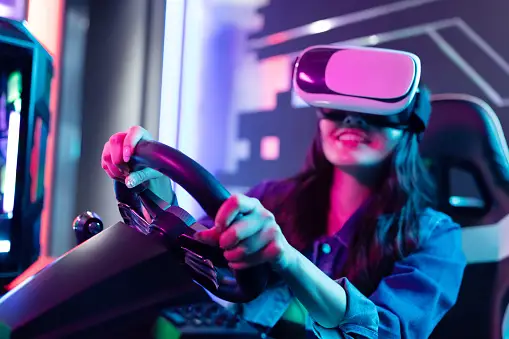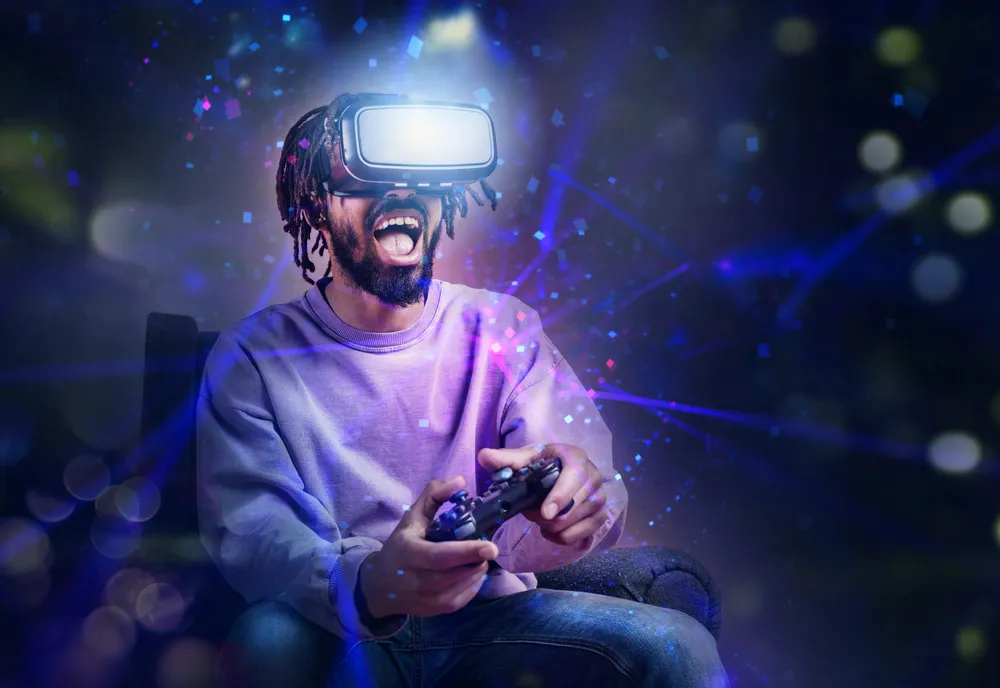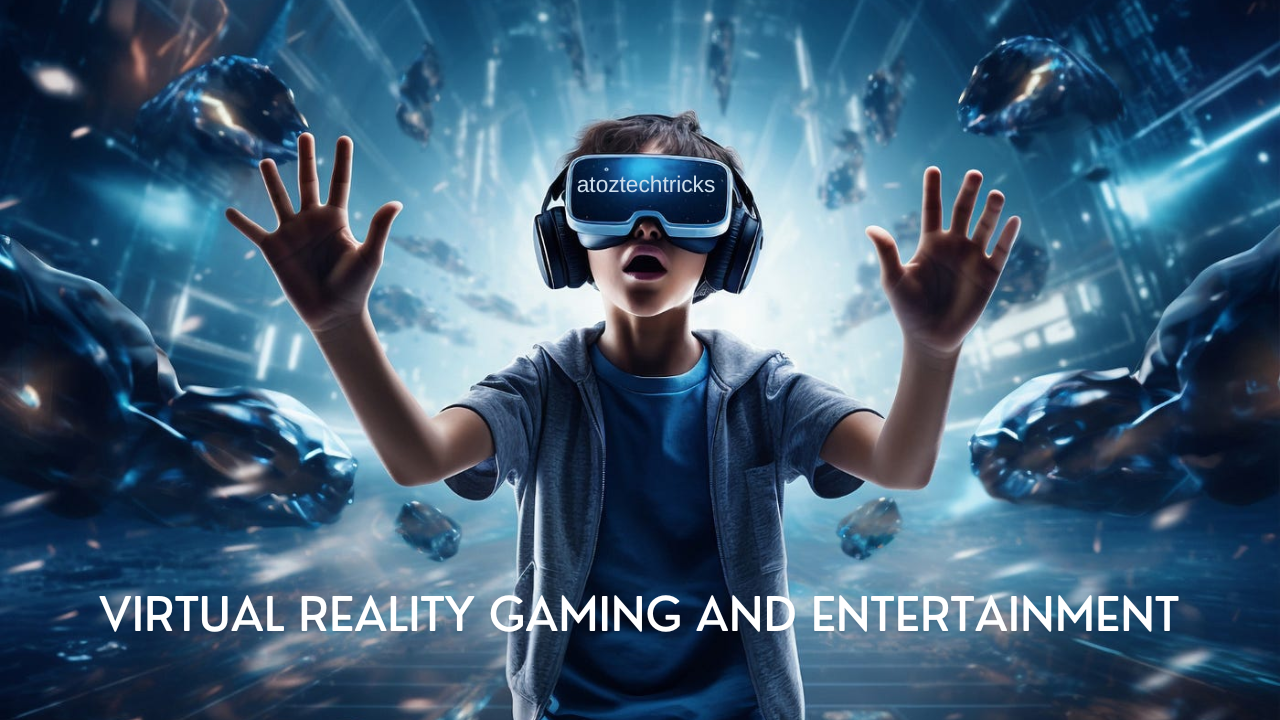Virtual Reality Gaming and Entertainment: Revolutionizing the Future of Fun
Virtual reality (VR) has transcended from a futuristic concept to a dynamic force transforming the gaming and entertainment industries. By creating immersive experiences that engage multiple senses, VR is not only altering how we interact with media but also expanding the boundaries of what’s possible in gaming and entertainment. This comprehensive guide explores the rise of VR, its impact on gaming and entertainment, the current state of the industry, and what the future holds.
The Rise of Virtual Reality
1. Early Beginnings of VR
The concept of virtual reality dates back to the mid-20th century. Early developments in VR were more about theoretical ideas and rudimentary experiments rather than practical applications. In the 1960s, computer scientist Ivan Sutherland and his student Bob Sproull created the first head-mounted display system, known as the “Sword of Damocles.” This primitive system laid the groundwork for future VR technologies but was limited by its lack of resolution and interactivity.
2. Technological Advancements
The 1980s and 1990s saw significant technological advancements that pushed VR closer to the mainstream. The development of motion-tracking sensors, more powerful computers, and enhanced graphics processing units (GPUs) contributed to creating more immersive VR experiences. Companies like Sega and Nintendo began experimenting with VR, although their attempts often fell short due to technical limitations and high costs.
3. VR in the 21st Century
The 21st century marked a turning point for VR. In the early 2010s, Oculus Rift, a Kickstarter-funded project, demonstrated the potential of VR for gaming. Oculus’s success caught the attention of major tech companies, leading to a surge in VR development. By 2016, Oculus Rift, HTC Vive, and PlayStation VR had made VR accessible to consumers, setting the stage for a new era in gaming and entertainment.
Cybersecurity Consulting and Services: A Comprehensive Guide
The Impact of VR on Gaming
1. Immersive Gameplay
One of the most significant impacts of VR on gaming is the creation of immersive gameplay experiences. Unlike traditional gaming, where players interact with a screen, VR games place players in a fully immersive 3D environment. This allows for a more profound sense of presence and engagement. Players can physically move around, interact with objects, and experience a heightened sense of realism.
2. Innovations in Game Design
VR has introduced new possibilities for game design. Game developers can create environments and scenarios that would be difficult or impossible to replicate in traditional gaming. VR’s ability to track head movements, gestures, and body positions allows for innovative gameplay mechanics. For instance, games like “Beat Saber” use hand movements to slice through virtual blocks, while “Half-Life: Alyx” leverages VR to deliver a highly interactive and narrative-driven experience.
3. Social and Multiplayer VR Gaming
Social interactions in VR are another significant development. Virtual reality has enabled players to meet and interact with others in a shared virtual space. This has led to the creation of VR social platforms, such as VRChat and Rec Room, where users can engage in various activities, from casual hangouts to collaborative games. These platforms foster a sense of community and social presence that traditional online multiplayer games often lack.
4. VR and eSports
The integration of VR into eSports is an emerging trend. VR eSports offers a unique twist on traditional competitive gaming, with players competing in immersive environments that require different skills and strategies. Although VR eSports is still in its infancy, it has the potential to grow into a major segment of the competitive gaming scene as technology advances and more players adopt VR.

The Influence of VR on Entertainment
1. Immersive Storytelling
Beyond gaming, VR is revolutionizing storytelling in entertainment. Filmmakers and content creators are exploring new ways to engage audiences through immersive experiences. VR films and experiences, such as “The Lion King VR” and “The Invisible Man VR,” allow viewers to step into the story and experience it from different perspectives. This level of immersion enhances emotional engagement and provides a more interactive form of storytelling.
2. Virtual Concerts and Events
The COVID-19 pandemic accelerated the adoption of virtual events, including concerts and live performances. VR platforms like Wave and Oculus Venues have enabled artists to perform live in virtual environments, allowing fans from around the world to attend shows from the comfort of their homes. These virtual concerts offer interactive features, such as virtual meet-and-greets and exclusive content, creating a new way for fans to experience live entertainment.
Digital Marketing and Advertising Services: A Comprehensive Guide
3. Theme Parks and Attractions
Theme parks and attractions have also embraced VR technology. VR rides and experiences offer visitors a new level of immersion and excitement. For example, Universal Studios and Disney have incorporated VR into their attractions, providing guests with thrilling experiences that blend physical rides with virtual elements. These innovations enhance the overall experience and attract visitors seeking novel forms of entertainment.
4. Educational and Training Applications
VR’s potential extends beyond entertainment into educational and training applications. VR can simulate complex environments and scenarios, making it an effective tool for training in fields such as medicine, aviation, and military. Educational VR experiences can provide interactive learning opportunities, allowing users to explore historical events, scientific concepts, and more in an engaging and immersive way.

The Current State of the VR Industry
1. Market Growth and Adoption
The VR industry has seen substantial growth in recent years. According to market research, the global VR market was valued at approximately $20 billion in 2023 and is projected to grow at a compound annual growth rate (CAGR) of over 20% in the coming years. This growth is driven by advancements in technology, increasing consumer interest, and expanding applications of VR across various sectors.
2. Major Players and Innovations
Several major players dominate the VR market, including Meta (formerly Facebook), Sony, HTC, and Valve. Meta’s Oculus Rift and Quest series, Sony’s PlayStation VR, HTC’s Vive, and Valve’s Index are some of the leading VR headsets available today. Each company is investing heavily in research and development to enhance VR hardware and software, aiming to deliver more immersive and accessible experiences.
3. Challenges and Limitations
Despite its growth, the VR industry faces several challenges. High costs, technical limitations, and the need for powerful hardware can be barriers to widespread adoption. Additionally, issues related to motion sickness and user comfort need to be addressed to improve the overall VR experience. As technology continues to evolve, these challenges are expected to diminish, making VR more accessible and enjoyable for users.
4. The Future of VR Gaming and Entertainment
The future of VR in gaming and entertainment holds exciting possibilities. As technology advances, we can expect more realistic graphics, improved haptic feedback, and greater interactivity. Innovations such as wireless VR headsets, advanced motion tracking, and AI-driven content will further enhance the VR experience. Additionally, the integration of VR with other technologies, such as augmented reality (AR) and artificial intelligence (AI), will open up new opportunities for immersive and interactive experiences.
5. Emerging Trends
Several emerging trends are shaping the future of VR. One such trend is the growth of VR fitness applications, which combine exercise with immersive environments to create engaging workouts. Another trend is the rise of VR social experiences, where users can interact and collaborate in virtual spaces. The development of cross-platform VR experiences, allowing users to switch between VR and traditional platforms seamlessly, is also gaining momentum.
Virtual reality is revolutionizing the gaming and entertainment industries by offering immersive, interactive, and engaging experiences. From its early beginnings to its current state, VR has evolved significantly, driven by technological advancements and growing consumer interest. The impact of VR on gaming includes more immersive gameplay, innovative game design, and new social interactions, while its influence on entertainment extends to immersive storytelling, virtual concerts, and theme park attractions.

As the VR industry continues to grow and evolve, it will undoubtedly shape the future of how we experience gaming and entertainment. With ongoing advancements in technology and expanding applications, VR has the potential to transform not only how we play and enjoy media but also how we connect and interact in the digital world.




Post Comment